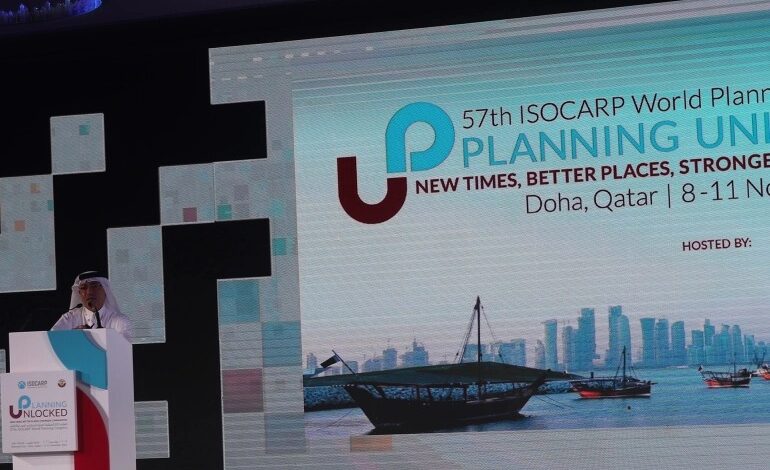Al-Jaida reveals a project in Qatar aimed at transforming old neighbourhoods into thriving modern cities

Al Furjan features a unique blend of living in a sophisticated home with a patio and a complete feeling of privacy. While still being able to walk to shops and work in a modern urban setting.
During his presentation, Al-Jaida explained that he has been studying and researching for the past 10 to 15 years in order to benefit from past experiences in designing modern furjans, or residential cities, that maintains identity and culture and adapt to development and modernity.
The 57th conference of the International Association of City and Territory Planners includes 5 sub-themes related to contemporary urban planning, such as sustainability, inclusion, empowerment, well-being, healthy and smart cities, development, resilience, adaptability, exclusivity and urban connectivity, as well as its main theme entitled “Open Planning: New Times, Better Places and Stronger Communities”.
Al-Jaidah explained that he intended to translate elements of the ancient Al Furjan into modern, integrated, and developed cities, at least in terms of social aspects, privacy, and proximity to schools and shops.
With this experience, he also aimed to illustrate a modern city where children can play privately without worrying about cars. Particularly since modern cities have become cities for cars as well as for pedestrians.
He added that he hopes that the modern Al-Farij will arrive as soon as possible and that it will be a state of mind that is followed in Qatar as well as the Gulf region since it will bring together architectural elements of Al-Furjan and the old neighbourhoods.
He added that Qatari traditions have been taken into account in the modern Fereej, where courtyards still exist, building systems, columns, and privacy as well. As a result, Fereej, which is a combination of all that is attractive about the past, is comparable to the latest cities.
As part of this project, the environmental aspect was also taken into consideration, in particular local trees that have proven successful in our communities and environment over the years, rather than trees from outside the country that require a lot of water and aren’t suitable for the Qatari climate.
Al-Jaidah pointed out that this research presentation is an important opportunity for all planners and architects from around the world to see all the pioneering experiences of Qatar, and learn about its beautiful characteristics, and how to develop these characteristics in its new cities instead of relying on planners coming from either the West or the East, who put designs that are not theirs. Relationship with our culture and our environment.
Since Al-Furjan and Al-Harat have existed for centuries in countries from east to west, and the plan is based on serving humanity, he believes that the modern Al-Furjan experience can be implemented immediately and anywhere.
Approximately 500 individuals, architects, planners and experts attended the conference. Through the conference, practitioners exchanged experiences, promoted the planning profession, and increased public awareness and understanding of major planning issues.



